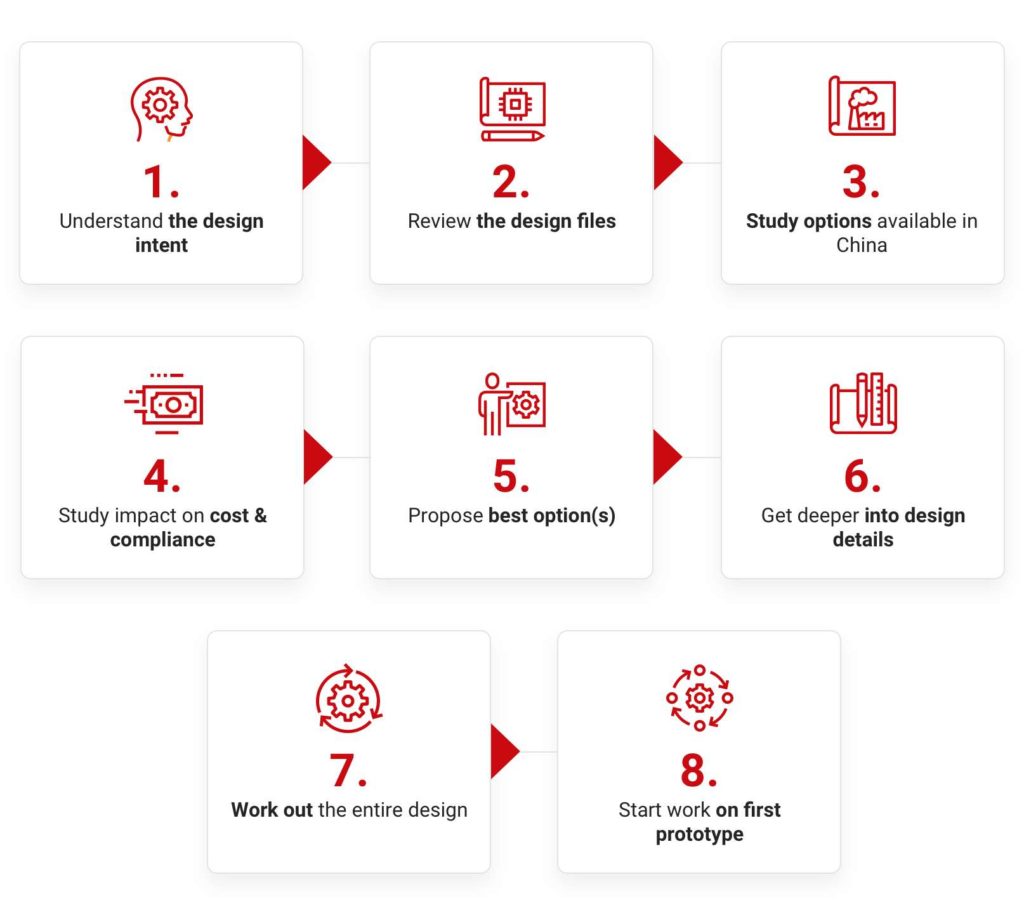
Many clients come to us with a product design and expect that we start building a prototype immediately, but in fact, that’s a recipe for a lot of trial-and-error iterations and an abnormally long and expensive development process.
Here’s what we suggest the process should be like in order to get the best results…
Lack of research about product testing can be damaging
A common issue that affects importers is not researching what product testing will be done (for compliance, and for reliability). If this is not taken into account from the very start of the project, engineers can spend weeks or even months on design & prototyping work before they realize the product won’t be compliant! Going back to square 1, and revising the design, is a massive waste of time.
In a nutshell, certain considerations need to be known from the start. And some tasks have a long lead time and need to be addressed as first priority.
The process we follow before prototyping
You can see the onus that we put on initial planning before we get to the prototyping stage.

Initial planning checklist
Let us cover some key aspects of initial planning as seen in points 1 to 7 above.
First, is the design intent very clear?
Is it documented in a way that will allow the project manager, an R&D engineer, a purchaser, etc. to grasp what is needed, without omissions or misunderstandings?
Your requirements need to be as specific as possible.
A “high-end level of finishing” does not mean much. Examples of similar/competing products (in the same universe) can help.
Is the design calling for a solution that is unnecessarily complex (an ‘over-engineered’ product)?
If you want a first version on the market very soon, keep it as simple as possible
What do the budget and/or timelines dictate?
Should the product be developed entirely from scratch, or make of as many standard (i.e. already existing on the market) modules?
Can the design be manufactured in China relatively easily? (This is a “design for manufacturing” review.)
If it is not easy, expect a higher cost and higher quality risks (which usually means long delays, too).
Prototype verification and validation
If our engineers don’t know what objective tests the prototype will have to pass, there is a risk they work in the wrong direction (requiring more prototyping rounds and much wasted time and money) — in ISO 9000 terms, this is the “verification” of the prototypes and it needs to be taken into account early on
Similarly, in some cases, it makes sense to collect samples of the materials and have them confirmed by the client — this will be the “validation” of the prototypes, and it is never too early to start this step.
The feasibility study
Another important aspect of this initial planning phase is to identify the riskiest (or most challenging) aspects of the project. A feasibility study and/or a ‘proof of concept’ prototype is often needed. This is the time for mechanical simulations on software, further design work (e.g. block diagram), and so forth.
When we mention the riskiest aspects of the project, we should not be restricted to technical risks. If the main risk is related to the market (i.e. will people buy this product?), making a small series of ‘minimum viable product’ samples might be the first action. This is the ‘Lean Startup” approach to minimize the risk of wasting resources.
******
What pre-prototype planning do you perform? Let us know in the comments.
Unsure where to get started? Contact us and we can discuss your situation and see how and where we can assist you with the development and prototyping stage of your project, or more.



